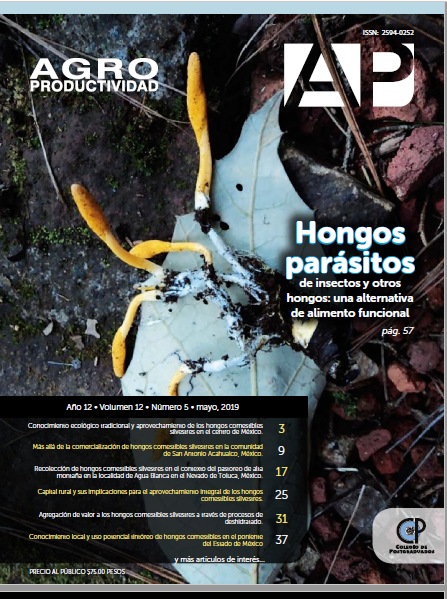LOCAL KNOWLEDGE AND POTENTIAL USE AS A PIGMENT OF EDIBLE MUSHROOMS IN THE STATE OF MEXICO
Main Article Content
Keywords
wild edible mushrooms; non-timber forest resources; ethnomycology; natural dyes
Abstract
Objective: Identify species of wild edible fungi, culturally relevant for some indigenous communities in the west of the State of Mexico and determine their potential use for wool dyeing, as a primary input for the production of traditional clothes.
Design, methodology and approximation: Simple case study through the application of interviews with key actors.
Results: 17 edible species of interest were identified, five of which stand out for their potential to generate different colors of good intensity: Agaricus cf. Subrutilescens, Agaricus moelleri, Cantharellus cibarius, Hypomyces lactifluorum and Sutorius aff. Luridiformis.
Limitations and implications: It is an exploratory case study that must be contrasted with the empirical evidence provided by other similar cases.
Findings and conclusions: Although there is a long tradition among indigenous communities of the use of dyeing plants, the use of fungi for wool dyeing is not known, its diffusion among textile producers would contribute to increasing its cultural heritage.

